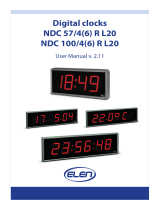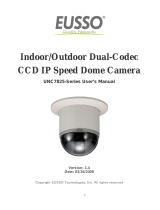
Drives.................................................................................................................................................................................69
Removing a drive blank............................................................................................................................................. 70
Installing a drive blank................................................................................................................................................70
Removing a drive carrier............................................................................................................................................ 71
Installing a drive carrier..............................................................................................................................................72
Removing the drive from the drive carrier..............................................................................................................73
Installing a drive into the drive carrier......................................................................................................................74
Hard drive backplane....................................................................................................................................................... 75
System memory............................................................................................................................................................... 75
General memory module installation guidelines...................................................................................................... 77
Mode-specic guidelines...........................................................................................................................................78
Removing a memory module.................................................................................................................................... 78
Installing a memory module.......................................................................................................................................79
Expansion cards and expansion card risers.................................................................................................................. 80
Expansion card installation guidelines......................................................................................................................80
Removing the expansion card riser ......................................................................................................................... 81
Installing the expansion card riser............................................................................................................................82
Removing the expansion card from expansion card riser..................................................................................... 84
Installing expansion card into expansion card riser................................................................................................85
Network daughter card...................................................................................................................................................86
Removing the NDC riser...........................................................................................................................................86
Installing the NDC riser..............................................................................................................................................87
Storage controller card....................................................................................................................................................87
Removing the storage controller card.....................................................................................................................88
Installing the storage controller card....................................................................................................................... 88
IDSDM...............................................................................................................................................................................89
Removing the microSD card.....................................................................................................................................90
Installing the microSD card.......................................................................................................................................90
Removing the optional IDSDM.................................................................................................................................90
Installing the optional IDSDM....................................................................................................................................91
Power supply unit.............................................................................................................................................................92
Hot spare feature.......................................................................................................................................................93
Removing a power supply unit................................................................................................................................. 93
Installing a power supply unit....................................................................................................................................94
Wiring instructions for a DC power supply unit..................................................................................................... 95
System battery.................................................................................................................................................................96
Replacing the system battery...................................................................................................................................96
Entering the system Service Tag by using System Setup.....................................................................................97
Trusted Platform Module................................................................................................................................................ 98
Upgrading the Trusted Platform Module................................................................................................................ 98
Initializing the TPM 1.2 for TXT users..................................................................................................................... 99
Initializing the TPM 2.0 for TXT users.....................................................................................................................99
7 Using system diagnostics........................................................................................................................... 100
Dell Embedded System Diagnostics.............................................................................................................................100
Running the Embedded System Diagnostics from Boot Manager.................................................................... 100
Contents
5






















